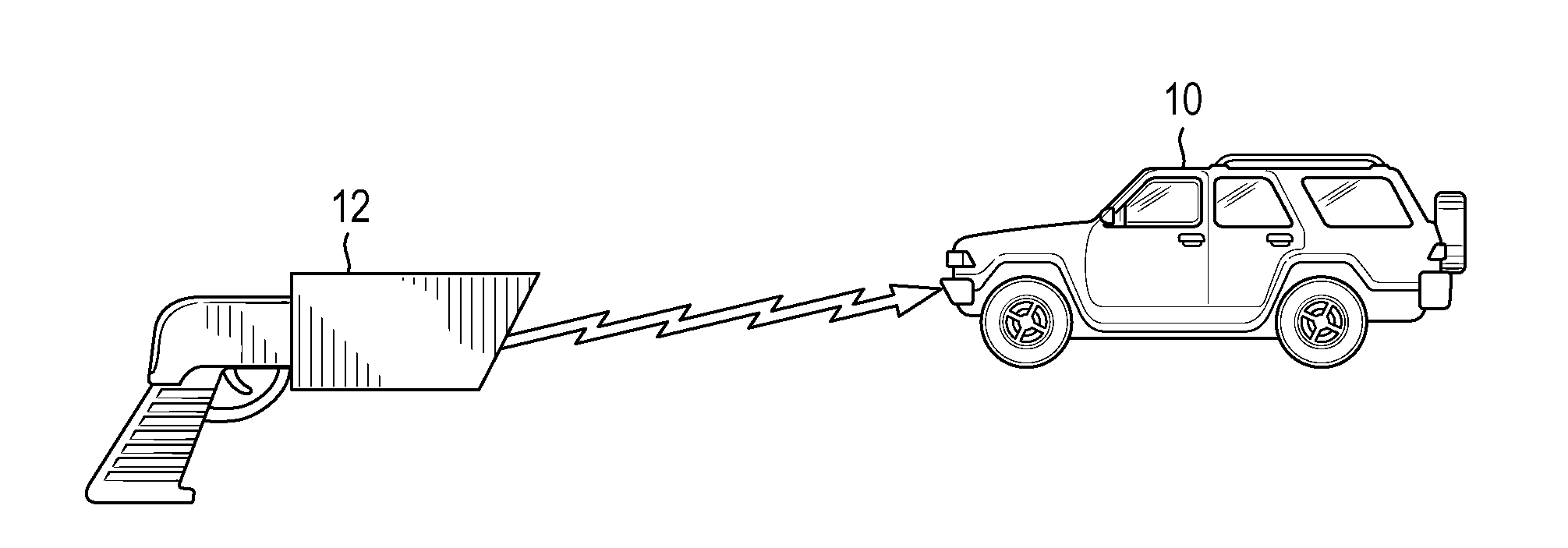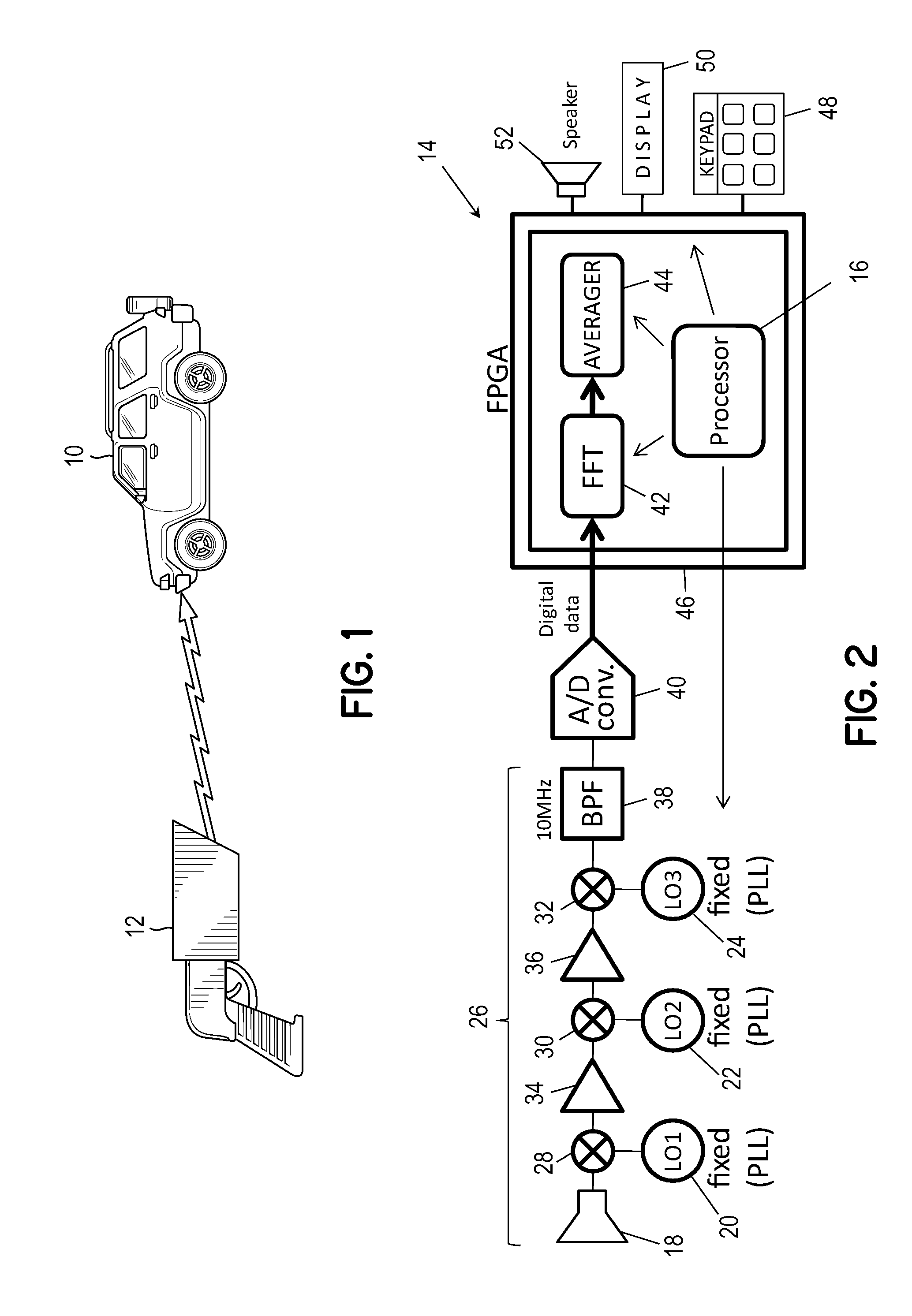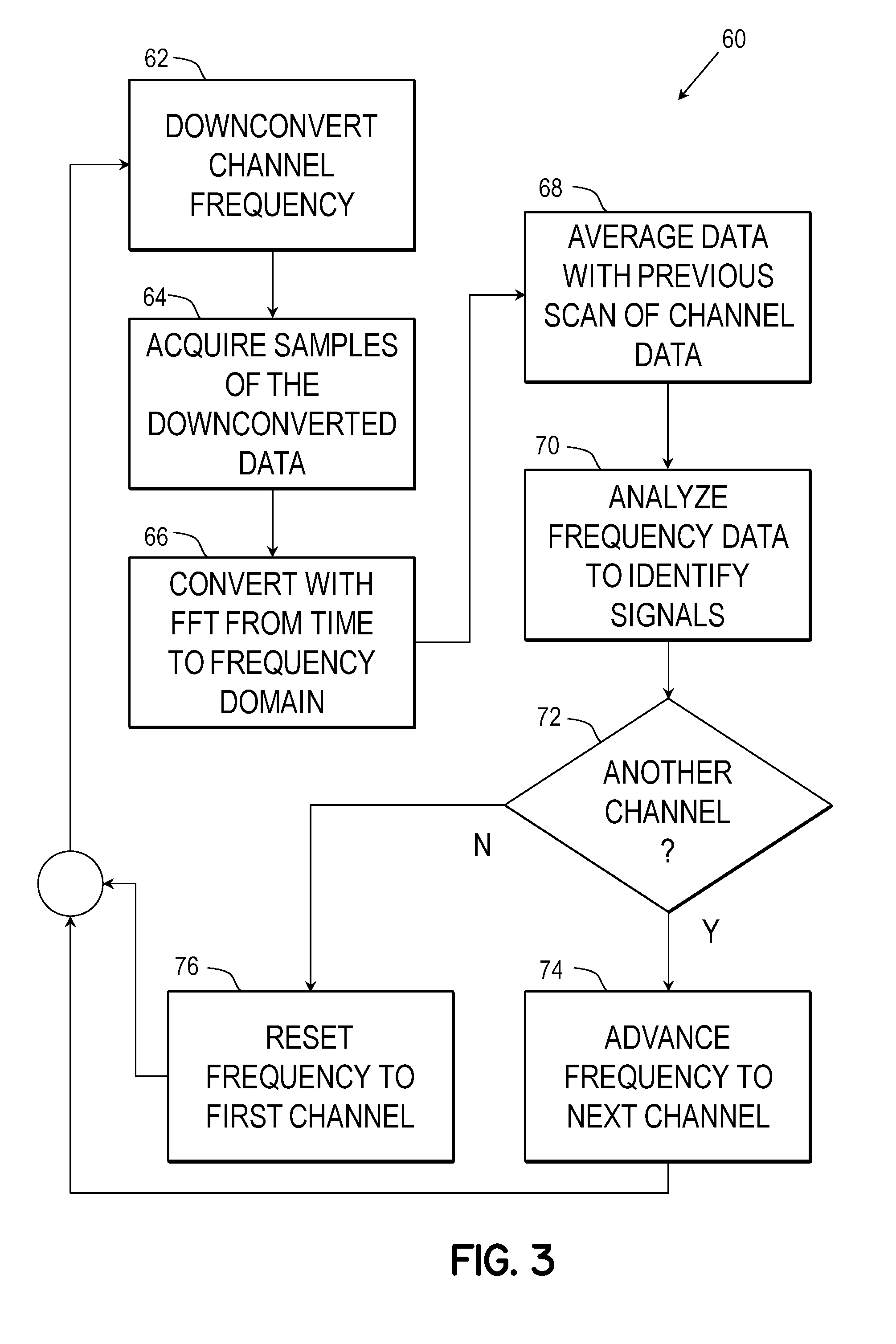Digital receiver techniques in radar detectors
a radar detector and digital receiver technology, applied in the field of radar detectors, can solve the problems of increasing the difficulty of achieving a good compromise between response time and sensitivity using narrow-band analog detection methods, and the slow response time of analog detection,
- Summary
- Abstract
- Description
- Claims
- Application Information
AI Technical Summary
Benefits of technology
Problems solved by technology
Method used
Image
Examples
Embodiment Construction
[0031]Embodiments of the invention implement direct IF sampling techniques. This method does not involve an FM demodulator. An intermediate frequency of the detector may be digitized by a wide band analog-to-digital converter and the resulting digital stream of data may then be processed completely in the digital domain, making the embodiments truly digital radar detectors. Embodiments employing digital techniques also realize, through wide band digital sampling, a significant improvement in response time, as well as increase in sensitivity.
[0032]Referring now to FIG. 1, a vehicle 10 is illustrated in operation on a roadway, under exposure to radio frequency signals from a variety of sources including police sources, such as RADAR gun 12, as well as other non-police sources of interference from surrounding businesses, homes, etc. (not shown). Vehicle 10 is equipped with a RADAR detector capable of detecting both the police and non-police sources. In some embodiments, the RADAR detec...
PUM
 Login to View More
Login to View More Abstract
Description
Claims
Application Information
 Login to View More
Login to View More - R&D
- Intellectual Property
- Life Sciences
- Materials
- Tech Scout
- Unparalleled Data Quality
- Higher Quality Content
- 60% Fewer Hallucinations
Browse by: Latest US Patents, China's latest patents, Technical Efficacy Thesaurus, Application Domain, Technology Topic, Popular Technical Reports.
© 2025 PatSnap. All rights reserved.Legal|Privacy policy|Modern Slavery Act Transparency Statement|Sitemap|About US| Contact US: help@patsnap.com



